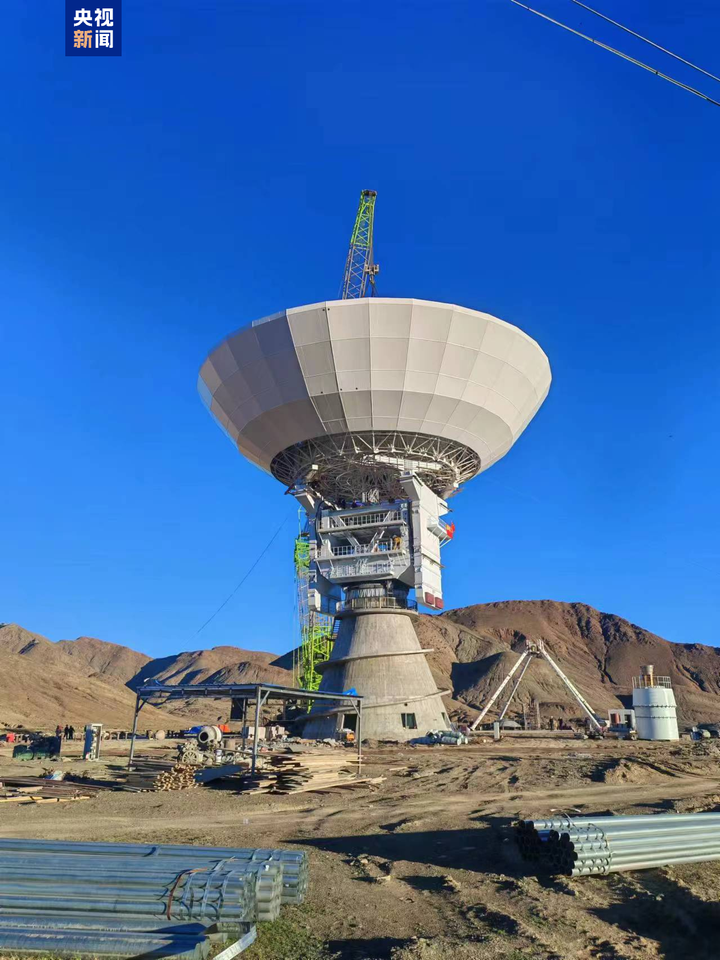Two radio telescopes with 40-meter-diameter antennas, one located in northeast and the other in southwest China, were put into use on Friday. These telescopes will aid in exploring deep space and unraveling cosmic mysteries.
The two telescopes were built by the Shanghai Astronomical Observatory (SHAO) of the Chinese Academy of Sciences (CAS) in the Changbai Mountain area in northeast China's Jilin Province and in Shigatse in southwest China's Xizang Autonomous Region respectively.
Following the deployment of the two new telescopes, the Very-Long-Baseline Interferometry (VLBI) network in China now includes one control center in Shanghai and six stations: two in Shanghai and one in each of Urumqi, Kunming, Changbai Mountain and Shigatse, according to SHAO.
VLBI is a radio interferometry technology that can be used to obtain fine radio images and precise positions of cosmic objects. Additionally, it is capable of achieving high-precision positioning for deep space probes. Unlike conventional techniques, the VLBI technique can combine signals received at different telescopes for joint processing. In other words, it is a "virtual telescope" with a size equal to the maximum separation between the telescopes, scientists explained.
With the two new telescopes, the longest baseline of China's VLBI network, or the "effective aperture of the virtual telescope" has been extended from approximately 3,200 kilometers to about 3,800 kilometers, said Shen Zhiqiang, head of SHAO.
As a result, the observable sky area of the upgraded VLBI network in China could be expanded by 25 percent, and the angular resolution in the X-band could be improved by 18 percent, according to Shen.
China's VLBI network has supported lunar exploration missions from Chang'e-1 to Chang'e-6 and the Mars mission Tianwen-1, providing high-precision measurement information about the orbits and position of the spacecraft.
Such a Chinese VLBI network with six stations will allow simultaneous measurement and flexible tracking of multiple targets in different celestial regions, providing stronger support for lunar and deep-space exploration missions in the future, Shen said.
At the launch ceremony for the two telescopes on Friday, Ding Chibiao, vice president of CAS, emphasized the crucial role of major sci-tech infrastructure in supporting innovation, and called for promoting openness and sharing of sci-tech facilities.
Ye Shuhua, an academician of CAS, said the two new telescopes will play an important role in future lunar exploration, as well as deep space missions to explore asteroids, Mars, Jupiter and other celestial bodies.
The construction of the two telescopes, which started in September 2023, has featured great challenges. One telescope was built at an altitude of 4,100 meters, while the other was located in the frigid region where winter temperatures can drop below minus 20 degrees Celsius, according to Shen.
The two telescopes will enhance China's capability in radio astronomy research and promote cutting-edge astronomical studies such as supermassive black holes, compact astrophysical objects with rapid variability, electromagnetic counterparts of gravitational waves and galactic dynamics, Shen added.
Source(s): Xinhua News Agency
CGTN
